The carnation flower, scientifically known as Dianthus caryophyllus, is a symbol of everlasting beauty and grace. With its delicate petals, enchanting fragrance, and a rich history dating back centuries, the carnation has captivated people all over the world. In this article, we will explore the fascinating world of the carnation flower, discovering its characteristics, symbolism, cultivation, and the meaning it holds in various cultures.
Carnation flower images
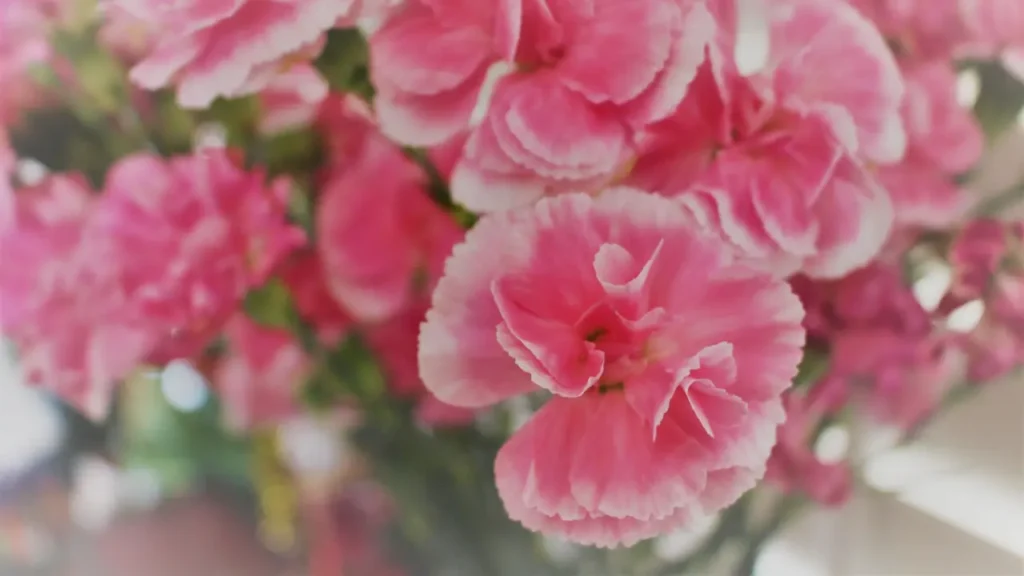
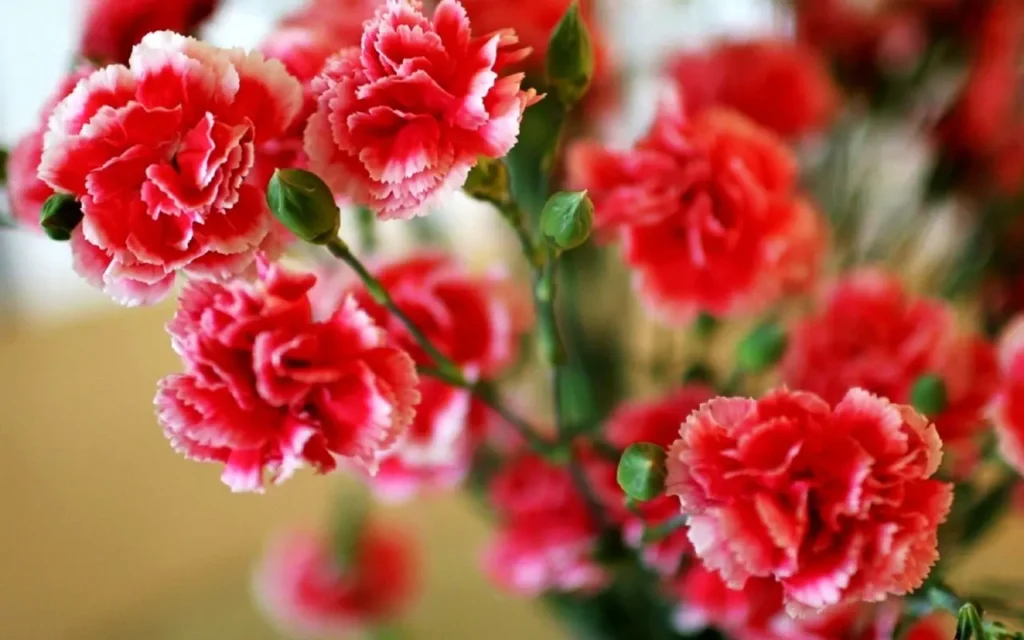
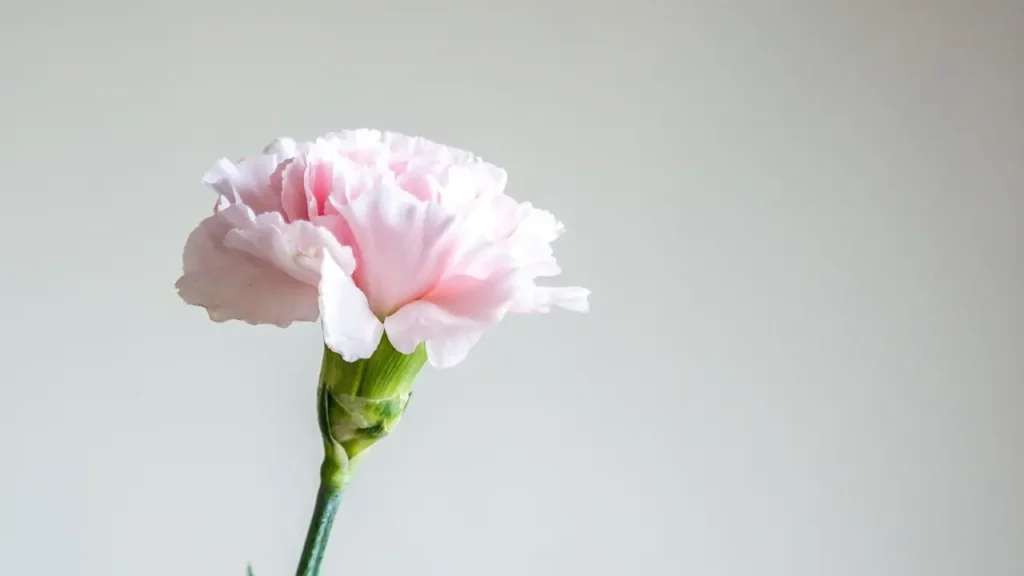
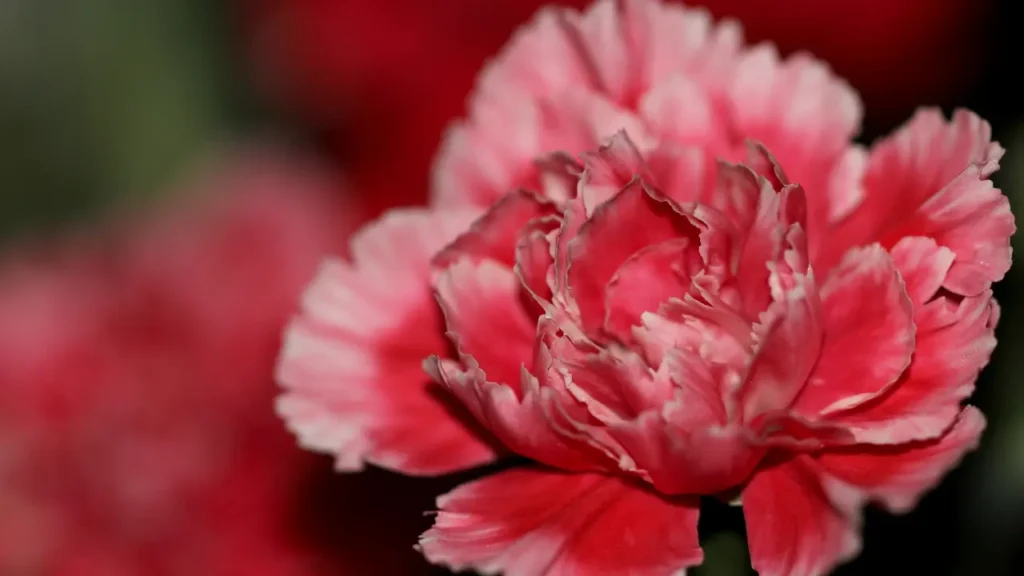


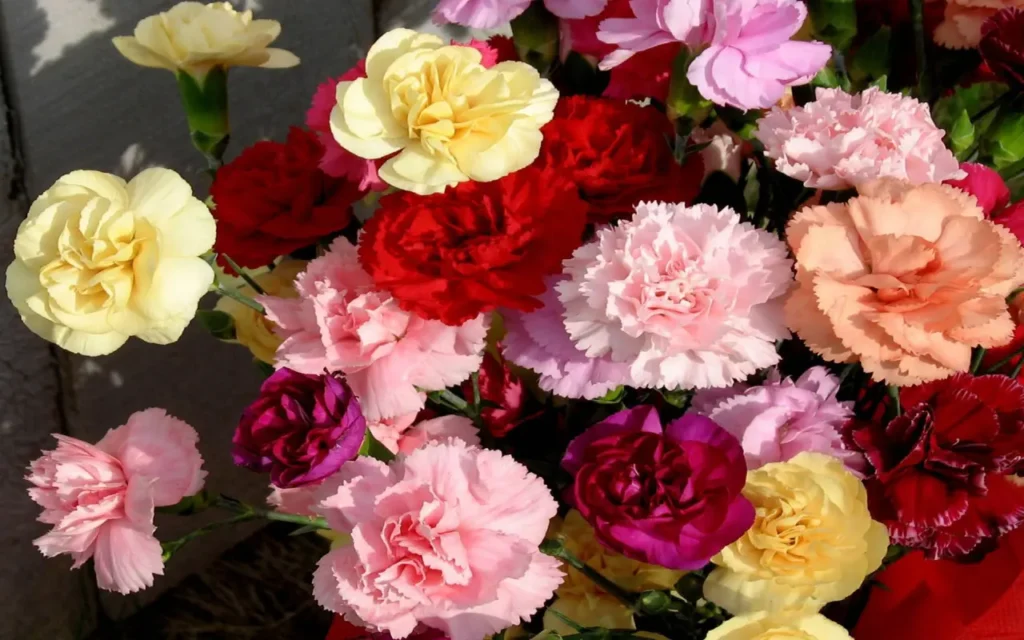
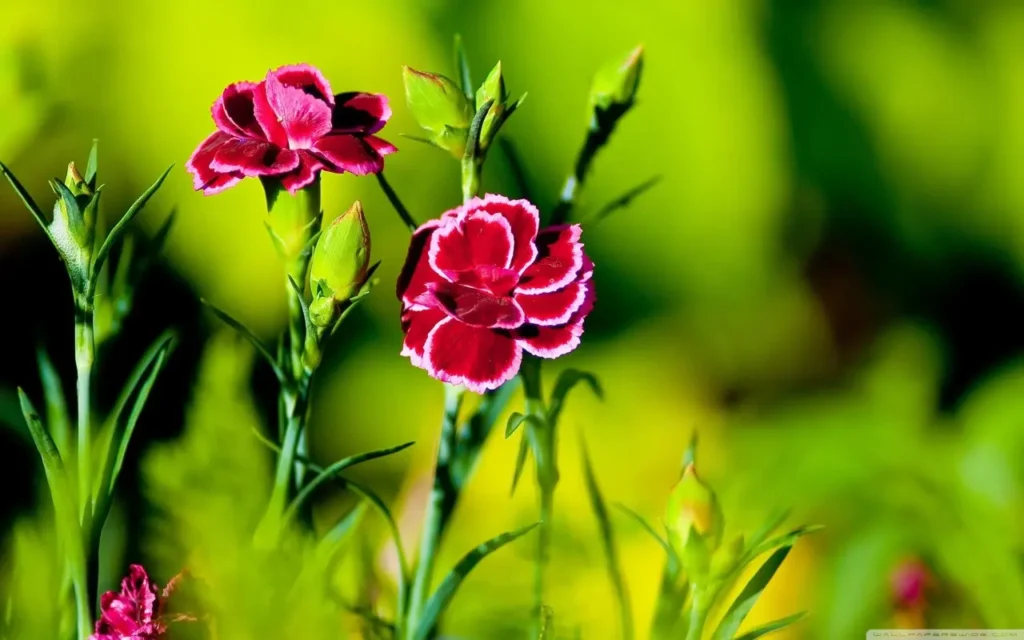
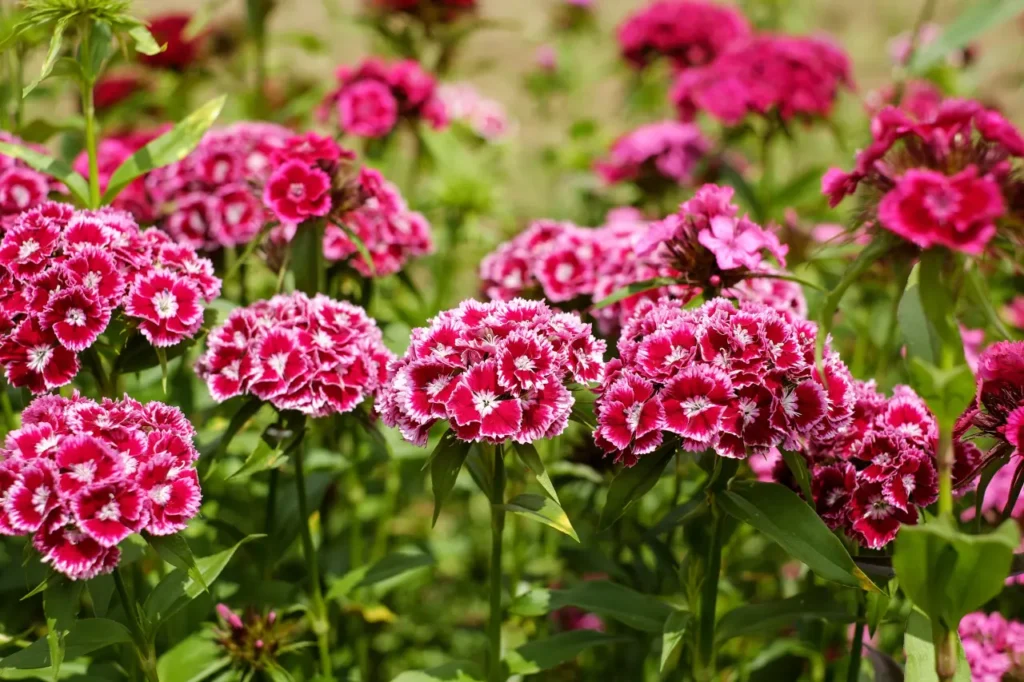




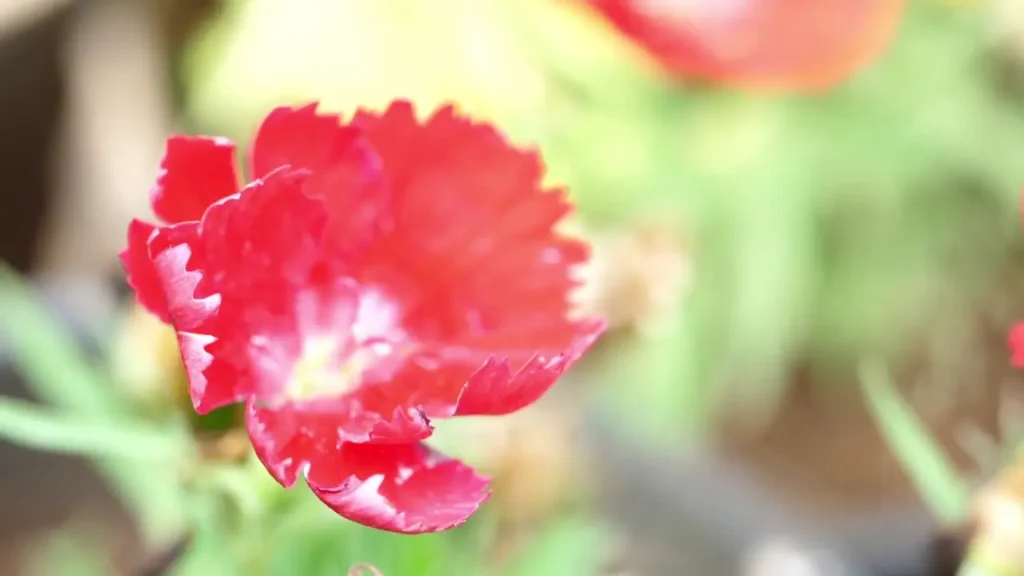
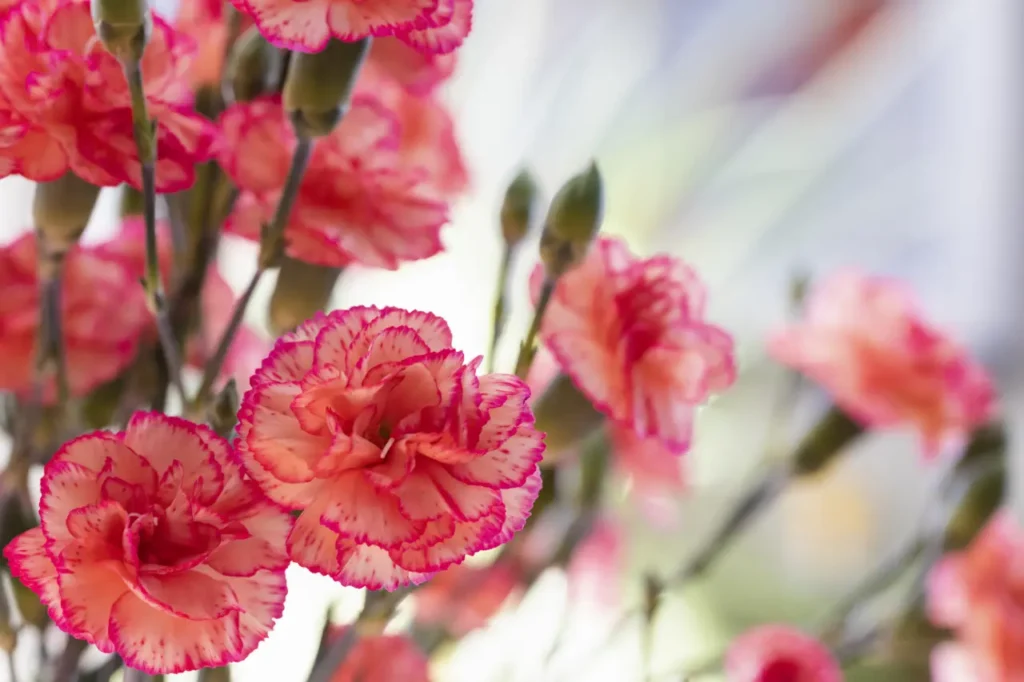


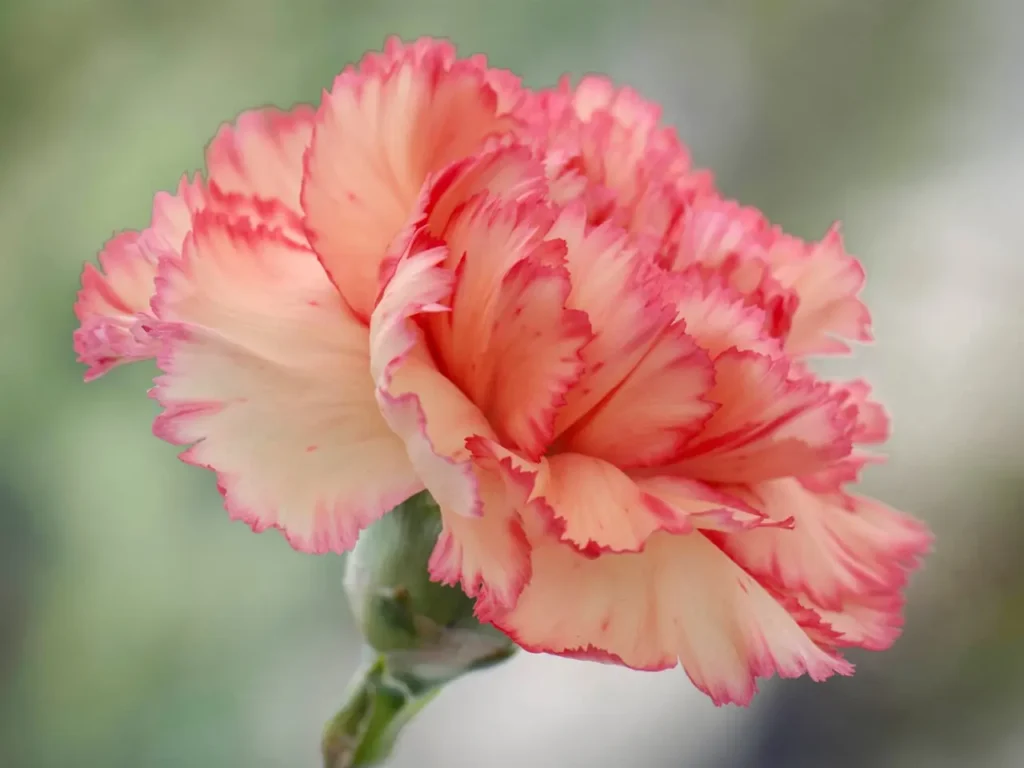

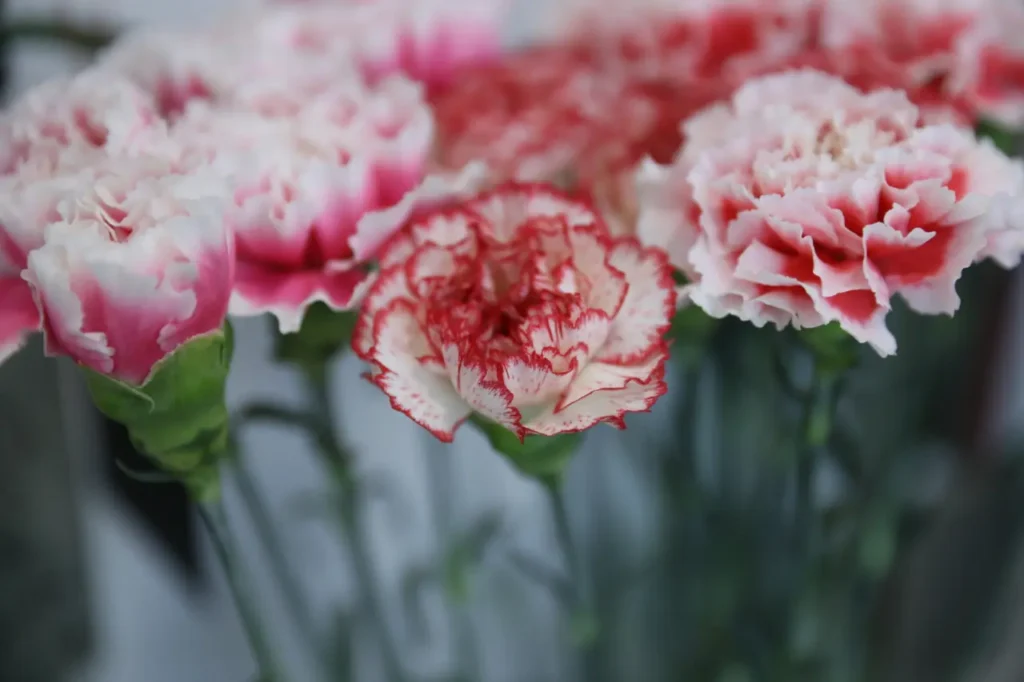
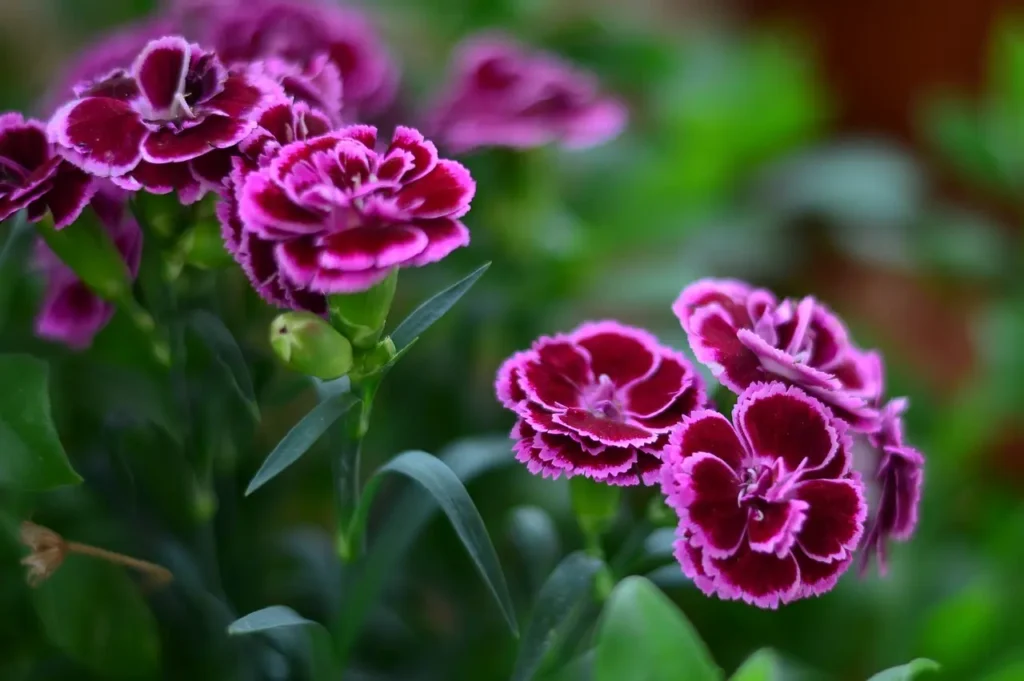
Appearance and varieties
Carnations are known for their distinctive wavy petals and sweet, spicy fragrance. These flowers come in a wide range of colors, including shades of pink, red, white, yellow, and purple, and some varieties exhibit multi-colored petals or edges with contrasting hues. The petals are densely arranged, giving the flower a full, lush appearance.
There are three main types of carnations: standard carnations, spray carnations, and dwarf carnations. Standard carnations have a single large flower per stem, spray carnations have several smaller flowers on a single stem, and dwarf carnations are smaller and are usually grown in pots or used as border plants.
Symbolism and meaning
Carnations have taken on a variety of meanings and symbolism over time. Traditionally, red carnations are associated with love and admiration, making them a popular choice for romantic gestures and Valentine’s Day bouquets. White carnations symbolize purity, innocence, and remembrance, and are often used in weddings and as a tribute to loved ones. Pink carnations represent gratitude and motherly love, while yellow carnations are associated with friendship and joy. The wide spectrum of colors allows for personalized expressions of sentiment and emotion.
Growing and Care
Carnations are perennials that thrive in temperate climates. They prefer well-drained soil and sunny locations, although some varieties can tolerate partial shade. Proper care includes watering regularly, especially during dry periods, and providing support to the stems to prevent them from falling over. Removing spent flowers promotes more blooming and helps maintain the plant’s vitality.
Propagation can be done by seeds, cuttings, or division. Starting from seeds requires patience, as seedlings may take several months to reach the flowering stage. However, most gardeners prefer to purchase young plants or propagate them by stem cuttings for faster results.
Cultural relevance
Carnations have a rich cultural significance in many parts of the world. They have been cultivated for centuries and were revered by ancient civilizations such as the Greeks and Romans. In some cultures, carnations are associated with religious ceremonies, used as decorative elements at festivals, or employed in traditional medicine for their supposed therapeutic properties.
In many countries, carnations are also a popular choice for special occasions such as weddings, Mother’s Day, and birthdays. They are frequently used in floral arrangements, bouquets, and corsages due to their long-lasting bloom.





